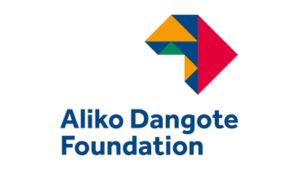
Nonprofit Bail Funds, Fueled by a Surge of Funds After George Floyd Protests, Face New Challenges
By Kay Dervishi
In 2020, as racial justice protests swept the nation after the police murder of George Floyd, thousands were arrested, prompting nonprofit bail funds to swing into action, posting cash to free people before trial.
In response, supporters of the funds donated unprecedented sums. The National Bail Fund Network, which includes more than 90 nonprofits in 38 states, estimates at least $100 million was raised in the latter half of 2020, largely through small donations from individuals. And the Bail Project, which works across 20 locations, reported almost $42 million in donations in 2020, nearly twice as much as the previous year.
In the three years since, bail funds have seen transformative growth and legislative wins, but they have also faced major political backlash. Emotions about the funds are high: Some bail-fund leaders have received death threats, and donations are slowing to a trickle.
Back in 2020, however, the influx of donations enabled these typically small, volunteer-run organizations to advocate more fiercely against cash bail and a system they argue is rigged against low-income people. Thanks in part to advocacy from the Chicago Community Bond Fund, for example, Illinois became the first state to end cash bail. It and other bail funds used donations to post bond for more people and connect defendants to social services, such as food assistance. The Bail Project helped 5,737 get out of jail from July 2020 to June 2021, compared with 4,689 people during the same time period in 2019.
Meanwhile, opposition to bail funds has also been on the rise since 2020. News outlets have identified cases in which defendants helped by bail funds have gone on to commit violent crimes. Those cases have drawn attention from policymakers, who fear that charitable bail funds present a public safety concern.
In March 2022, lawmakers in Indiana put in place legislation preventing nonprofits from bailing out people accused of violent crimes. Several other states, such as Kentucky and Minnesota, have proposed similar bills in the past two years limiting the work of charitable bail funds or even banning them. And in Illinois, the law ending cash bail is currently being challenged in court by local prosecutors and sheriffs.
“Many companies and corporations and politicians spoke out about Black Lives Matter, that these injustices George Floyd suffered were real and need to be fought against,” says Mirella Ceja-Orozco, co-executive director of the Minnesota Freedom Fund. “But when it came down to some of the harder conversations and the less superficial work, then they went silent or have backtracked.”
Disrupting Cash Bails
The act of organizing to post other peoples’ bonds dates back to at least the 1920s, according to Jocelyn Simonson, a professor at Brooklyn Law School. But over the past eight years, she says, the number of nonprofit bail funds has exploded. That growth was fueled by the Black Lives Matter movement’s rise after the murder of Michael Brown in 2014 and greater awareness of injustices in the criminal-justice system.
One of the most influential has been the Bronx Freedom Fund, co-founded in 2007 by Robin Steinberg, who drew on her experience as a public defender in the South Bronx. Steinberg has said her clients often pled guilty for crimes they did not commit because they did not have money for bail and wanted to go home.
In 2017, Steinberg founded a larger effort called the Bail Project to pay bail for low-income people and “disrupt the money bail system — one person at a time.” It soon became the largest bail fund working on a national level, thanks to a $30 million grant in 2018 from the Audacious Project, which is housed under TED and aims to bolster “jaw-dropping ideas with the potential to spark change.” The grant enabled the Bail Project to expand to more than 20 sites.
Growing alongside the Bail Project is the National Bail Fund Network. The group was started by the Brooklyn Community Bail Fund in 2016 using a $404,800 grant from Open Philanthropy, founded by Facebook co-founder Dustin Moskovitz and his wife, Cari Tuna.
The National Bail Fund Network is made up of independent bail funds: Members agree to a set of principles, including that community bail funds should be used as a tactic to end pre-trial incarceration.
In 2022, the National Bail Fund Network received a gift of an undisclosed amount from philanthropist MacKenzie Scott and a grant from the National Football League. The organization chooses not to disclose the amount of funding it’s received from donors. The Community Foundation for Greater New Haven, Grand Rapids Community Foundation, the Community Foundation for Southwest Washington, and others have also helped boost bail funds within the National Bail Fund Network.
Advocates of bail funds argue that no-strings cash payments can be life-changing for those who might otherwise lose their housing, jobs, and custody of their children while in jail. They also note the model is self-sustaining, since the bail amount is returned to the organization once a defendant appears in court and can be reused to help someone else. Research from the nonpartisan Prison Policy Initiative has found that about 82 percent of peoplein local jails — as many as 427,000 nationwide — have not been convicted of a crime and are awaiting trial.
Nicole Rodgers of Tulsa, Okla., could have been one of them. In April 2022, she was charged with robbery with a dangerous weapon, even though she had a receipt proving she was at an ATM nowhere near the incident. She was arrested and brought to court, and the judge set a $50,000 bond for her, eventually lowering it to $10,000 because she had no criminal record.
Even that reduced amount was too much for Rodgers to afford. She contacted the Bail Project, which paid off her bond. She then spent months fighting her case, which ultimately was dismissed and expunged from her record. Being stuck in jail could have had severe consequences for Rodgers. She was in the middle of buying a home and going through a divorce, which meant she risked losing her job, home, and custody of her children.
“I truly would have lost everything,” she says. Instead, her family moved into a new home in October, and Rodgers was able to continue working and studying for her master’s degree in social work.
What More Money Enabled
The large influx of donations in 2020 transformed bail funds like the Chicago Community Bond Fund. Tens of thousands of donors gave more than $7.2 million, largely from May to August. That was about seven times greater than the total revenue it received in 2019, according to Keisa Reynolds, the Chicago Community Bond Fund’s transitional executive director.
The organization used some of that funding to bolster its advocacy work, coordinating with other criminal justice-focused organizations in Illinois, and spent $250,000 a year starting in 2021 to lobby the state to abolish cash bail.
In 2021, Illinois Gov. J.B. Pritzker signed legislation ending cash bail. The law was expected to take effect this year, but instead it has been put on pause due to a challenge in court: Local prosecutors and sheriffs have argued that the state’s constitution requires a cash bail system.
If the law is upheld, Reynolds says, the Chicago Community Bond Bond will examine whether it can go out of business with its mission accomplished .
The Minnesota Freedom Fund also drew unprecedented donations in the aftermath of George Floyd’s murder in Minneapolis. Celebrities such as comedian Seth Rogen and actor Don Cheadle donated and encouraged others to do so. In just a few weeks, the nonprofit received $31 million from more than 900,000 individuals. So much money came in at one point that the Minnesota Freedom Fund stopped taking donations and redirected funds to similar groups.
By the end of 2020, the nonprofit’s revenue had ballooned to $41.7 million, according to the fund’s tax forms, a massive spike over the $231,424it brought in the previous year. Three-quarters of the funding came from individuals, the fund estimates, while foundations and corporations each accounted for 10 percent of the giving. The organization’s wealth allowed it to grow from one to 25 employees and provide defendants access to social services like virtual court hearings. This February, the Minnesota Freedom Fund also launched a separate political arm to lobby lawmakers and political candidates to end cash bail and mandate data reporting on jailing and bail amounts.
Smaller bail funds have also seen expansion. The Safety and Freedom Fund, a program housed under the nonprofit Operation Restoration in New Orleans, was operating at a $25,000 deficit in early 2020 while Covid-19 spread through local jails.
Thanks to the spike in giving in May 2020, revenue for the bail-fund program neared $900,000 during 2020, according to the nonprofit’s tax forms. Montrell Carmouche, its director, says those donations helped support a new program to connect people out on bail to social services such as food assistance and job placement.
Backlash Against Bail Funds
While legislation to end cash bail did pass in Illinois, efforts to limit use of cash bail in several other states have floundered amid concerns about rising violent crime.
New York State rolled back its bail laws for a third time in April, after passing a law in 2019 that eliminated bail for most misdemeanors and nonviolent felonies. Hawaii Gov. David Ige vetoed a bill that would remove bail for nonviolent misdemeanors for certain felonies last year. Ohio voters also approved a constitutional amendment giving judges more power to consider public safety when setting bail, a measure opposed by groups like the Bail Project.
Public safety concerns have also led several states, including Kentucky, Minnesota, and Pennsylvania, to introduce bills that would limit nonprofit bail funds’ ability to post bond. Indiana adopted a law last year that stopped charitable bail funds from bailing out people accused of violent crimes and banned them from receiving local and state government funds. The Bail Project has sued the state over the law, while pausing operations there.
That legislative backlash has limited bail funds’ ability to advocate for more policy change. And bail funds themselves have increasingly been accused of threatening public safety. Lawmakers have criticized bail funds for posting bond for people charged with violent crimes. For example, the Louisville Community Bail Fund in Kentucky came under fire last year for putting up $100,000 to bail out Quintez Brown, who allegedly tried to shoot Louisville mayoral candidate Craig Greenberg.
News organizations have also uncovered cases in which someone bailed out by a nonprofit goes on to be arrested for another serious crime. The Bail Project shut down its Las Vegas chapter after posting bond for a suspected burglar who went on to shoot a waiter. The waiter, who survived the shooting, is suing the nonprofit for failing to assess his background and potential to commit another crime.
This has put bail funds on the defensive, but most aren’t changing their approach. Instead, they are committing more time and funds to educate the public. The Chicago Community Bond Fund, for example, has met with student groups and faith-based organizations to explain how cash bail works. The Minnesota Freedom Fund created a new political arm in the form of a 501(c)(4) for lobbying.
“We didn’t want to have our hands tied behind our backs as people weaponize really terrible talking points against our clients just to hurt and harm our community,” says Elizer Darris, the Minnesota Freedom Fund’sco-executive director. He and co-executive director Ceja-Orozco say they and their clients have received death threats because of their work.
Bail funds have pushed back on safety criticisms by arguing that cases in which defendants commit new crimes are not the norm. They also have pointed out that for-profit bail bond agents don’t face the same public scrutiny.
“They’re the outliers, whether a private for-profit bail bondsman bailed somebody out, whether a local not-for-profit bail fund bails somebody out, whether a mom bails somebody out, or church bails somebody out,” Steinberg says.
On top of that, bail fund advocates say that cash bail provides a poor measure for public safety. A wealthy person charged with a serious, violent crime may be able to post a high bail and stay out of jail, Darris says, while a homeless person charged with a minor offense may be jailed because they can’t afford a comparatively small bail.
“It’s not a calculation of public safety or public risks,” Darris says. “It’s can you afford it?”
Many bail funds will help people regardless of the charges they face and are continuing to do so despite criticism. Several, including the Tucson Bail Fund, are restricted because they cannot afford the large bail amounts associated with serious charges. The Minnesota Freedom Fund has capped the amount of bail it will cover, which means it largely wouldn’t support defendants with more severe charges.
Some, like the Safety and Freedom Fund in New Orleans, won’t help defendants accused of certain crimes.
“We are not bonding people out for gun charges, even though they may very well be innocent, because we have a problem with the gun violence in New Orleans right now,” Carmouche says.
Meanwhile, bail funds have largely reported that funding has declined since 2020. Pilar Weiss, who oversees the National Bail Fund Network, says waning interest from donors remains a challenge.
“The fundraising landscape is pretty hard out there right now for a lot of groups because of the backlash around criminal-justice reform,” she says.
The Chicago Community Bond Fund didn’t meet its expected revenue last year because individuals gave less, according to Reynolds, the group’s executive director. Donations accounted for over 69 percent of its funding, while more than 20 percent came from foundations. Those donations are especially important, says Reynolds, as the nonprofit doesn’t use foundation dollars to post bond.
While money for bail is returned for reuse, that doesn’t mean charities have easy access to the repayments. Since the beginning of the Covid-19 pandemic, Weiss says, courts have faced a backlog of cases that have kept bail money in the court system.
Even with the decline in donations, Weiss says, the organizations can continue to advance their cause in other ways that go beyond posting bail.
“That act of paying bail is not the only engine to advocacy,” she says.
Though the fundraising and political climates have been difficult, Steinberg of the Bail Project expects that public sentiment toward bail reform will improve.
“I think people will see through the misinformation campaigns and remind ourselves of why we actually work on this issue, which is this is a matter of social justice and racial justice.”










baclofen 20 mg price